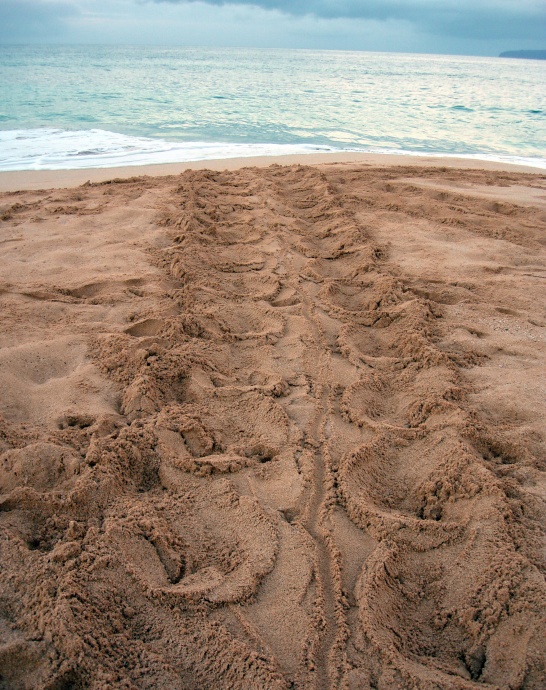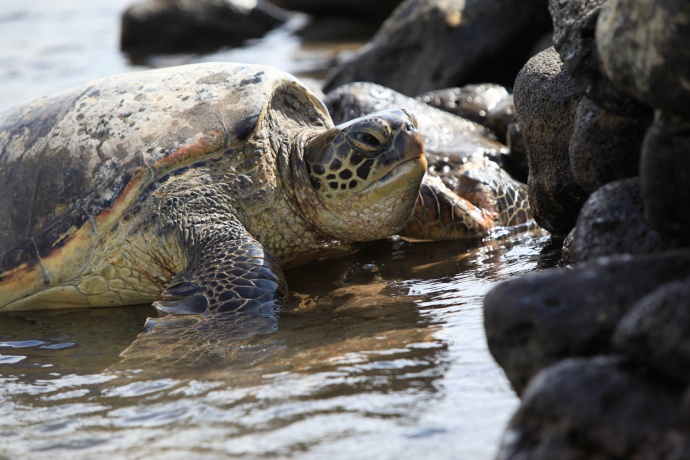Dawn Patrol: Hawksbill and Honu Sea Turtle Nesting Season

As sea turtles emerge onto beaches to lay their eggs, they leave distinctive 3 ft. wide tracks behind in the sand. Photo credit: Cheryl King.
By Wendy Osher
Wildlife officials are asking the public to be mindful of Hawksbill and green sea turtles as they begin their 2014 nesting season along Maui beaches next month.
The public is advised to stay at least 30 feet away from nesting turtles and watch quietly, as they are easily disturbed.
Officials from the US Fish and Wildlife Service say the success of their nests is crucial for the survival of these threatened and endangered species.
In addition to keeping a safe distance, wildlife officials ask the public to immediately report sightings of nesting activity, fresh turtle tracks, nest hatchlings, or turtles in trouble by contacting one of the following individuals:
- Skippy Hau, Department of Land and Natural Resources Division of Aquatic Resources: (808) 243-5294;
- Courtney Brown, US Fish and Wildlife Service: (808) 268-6316, [email protected]; or
- Cheryl King, Hawai‘i Wildlife Fund: (808) 385-5464, [email protected], www.wildhawaii.org.
Turtle hatchlings should not be picked up and placed in the ocean, as “they need to crawl on their own to set their navigational compass and increase their chance of survival,” Wildlife Service officials said.
The public can also help by keeping their dogs on a leash when walking on Maui beaches, and staying at least 15 feet away from basking green turtles.
The US Fish & Wildlife Service runs a Dawn Patrol program in which volunteers walk key beaches each morning from June 1 to Sept. 30, to search for nesting turtle tracks.
The sites are marked with the help of volunteers, the Wildlife Service, the state Department of Land and Natural Resources Division of Aquatic Resources, and the Hawai‘i Wildlife Fund.
In addition to marking the area, crews collect nesting data and share their knowledge with beach-goers on turtle conservation.











